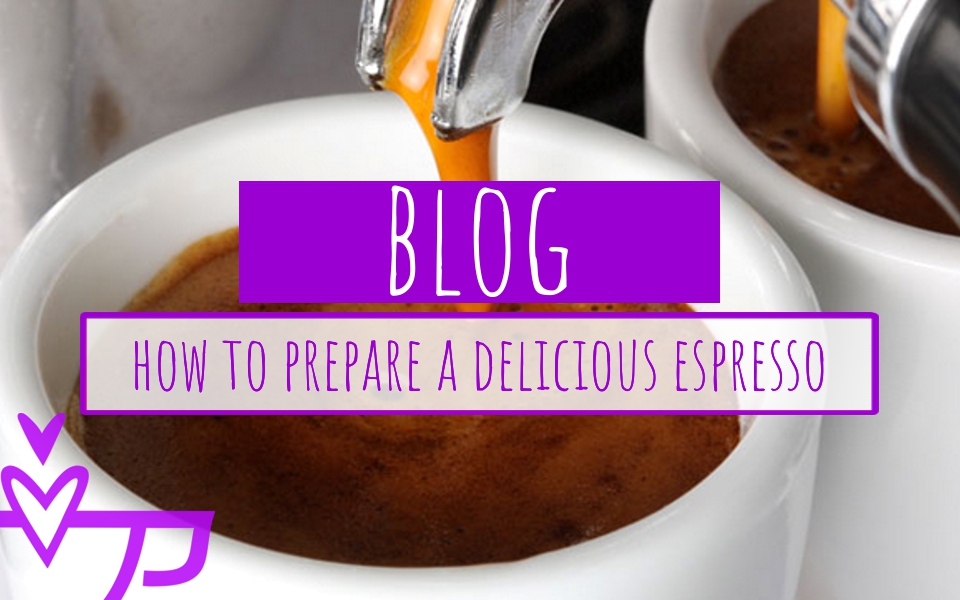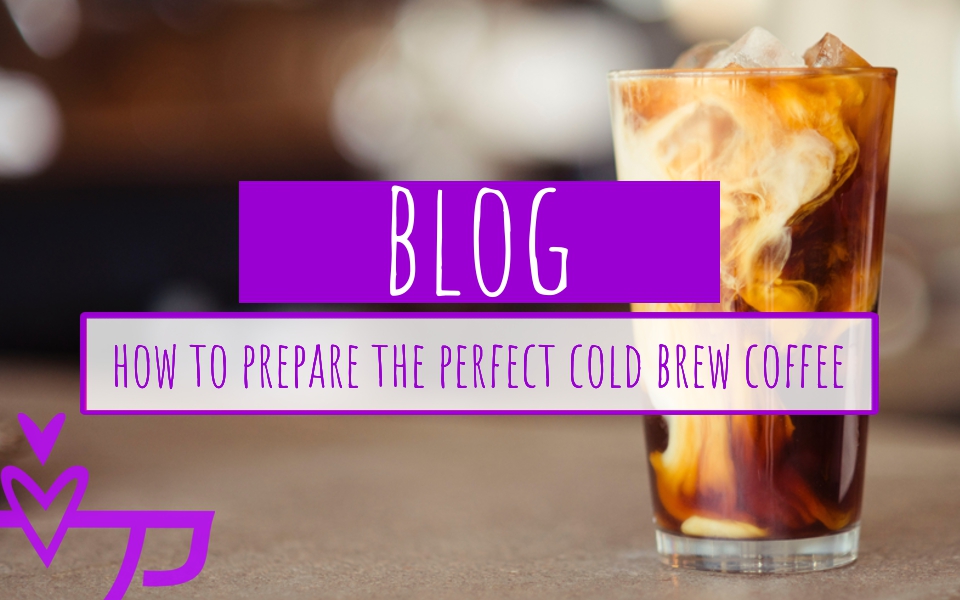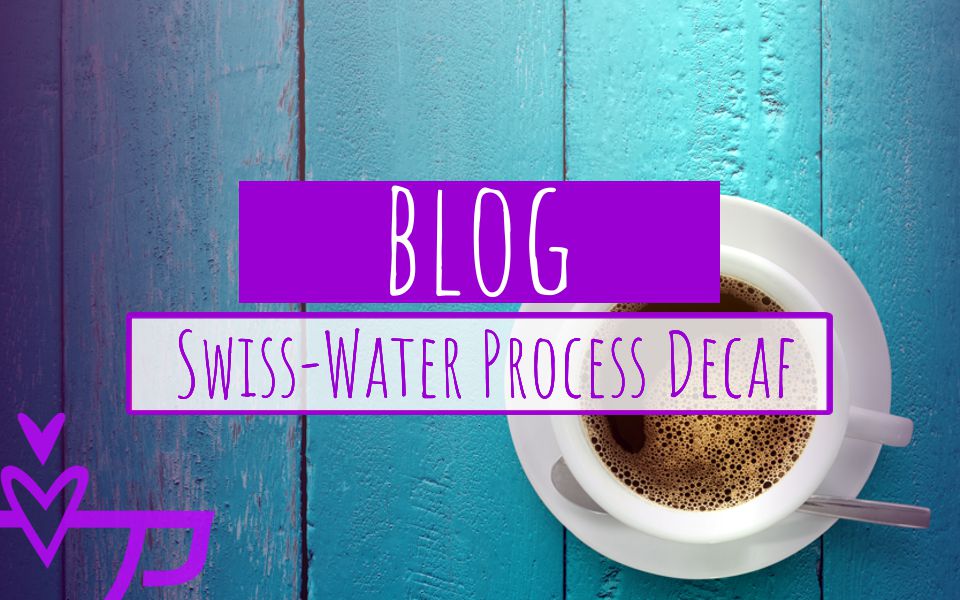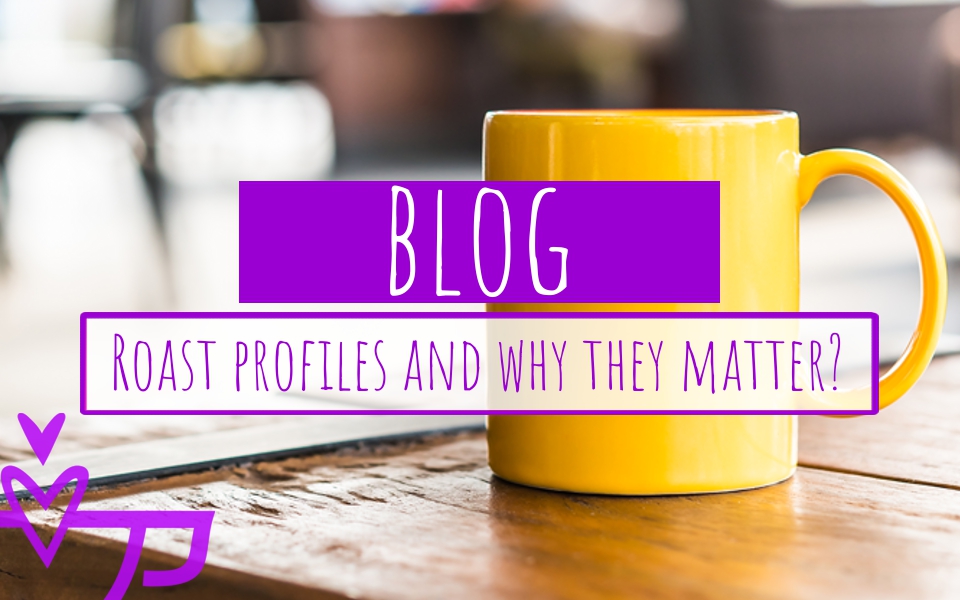
WHAT ARE ROAST PROFILES?
Enter a coffee roasting facility anywhere on this planet, and you will meet some of the most interesting artists. The Master Roasters as they are called, are more than just coffee connoisseurs, they are unrelenting perfectionists, akin to trompe l’oeil artists, always seeking perfection.
The Master Roaster is responsible not only for achieving a certain color degree in the coffee, they juggle variables such as time and temperature to bring out the best qualities of the coffee. Love the delicious aroma of coffee in the morning? Now you know who to thank!. To achieve consistent results, the Master Roaster relies on Roast Profiles. These mathematical S curves help the roaster pinpoint variables and roasting milestones that help them achieve the results that each batch of coffee deserves.
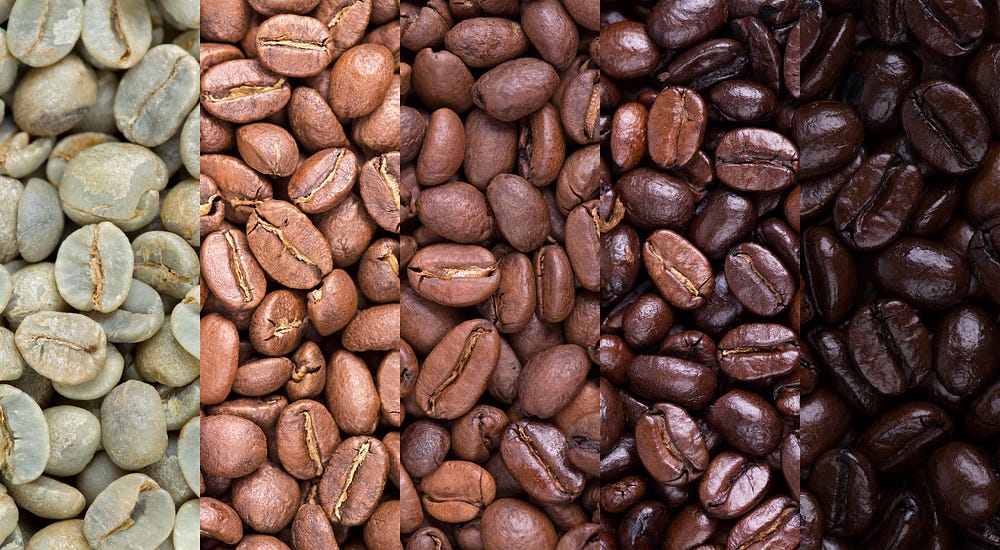
Living in the era of computers, where everything can be automated and self regulated, you will find surprising that in many commercial roasting facilities, the art of roasting has been delegated to the push of a button. Sure, you can achieve results this way, but great coffee deserves attention. A nurturing hand that brings out its full potential. After such a long journey, from growing happily in high mountains, harvesting, drying, and long weeks of shipping; coffee deserves to be roasted in a crowning manner.
The following graphic developed by the SCAA for one of its lectures references the roasting profile:
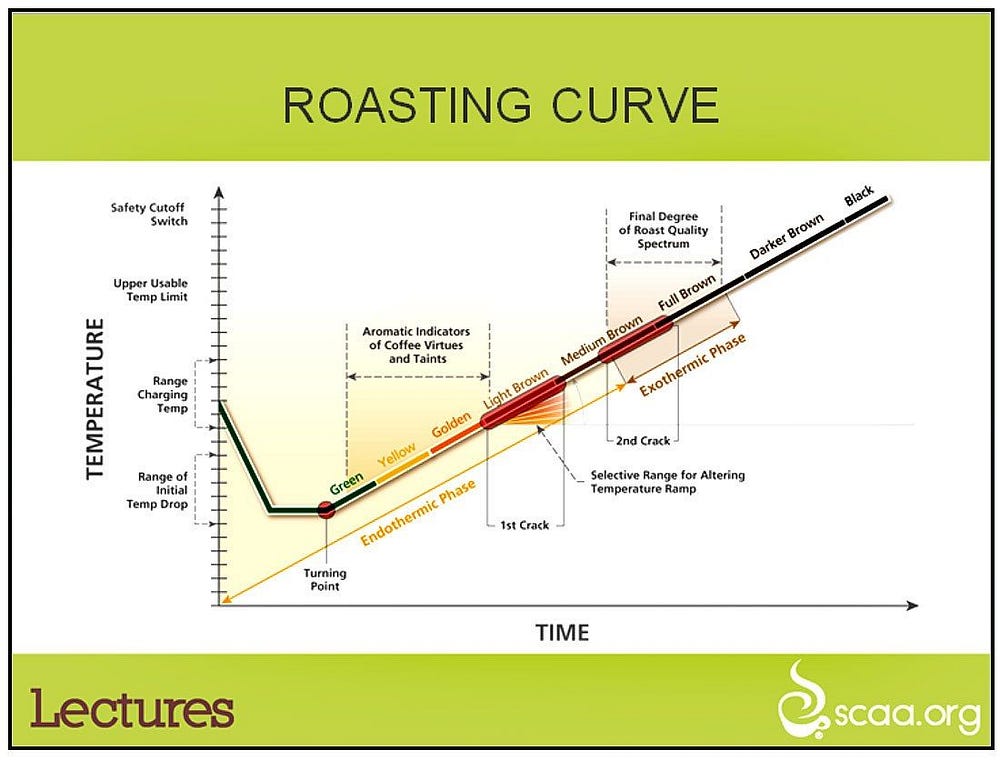
Roasting is a true art that takes many years to master. Like any craft, there are many terms you must become familiar with to understand each part of the process. Some of these points or terms are Drop Temperature, Turning Point, First Crack, Roast Development, End Heat and End Temperature of the Beans. Related to these terms are a range of physical transformations occurring within the beans, such as the famed and enhancing Maillard reaction.
In future posts, we will do a deeper dive into this fascinating subject. If you are a consumer starting out on a coffee discovery journey, the National Coffee Association of USA has defined some categories to help you understand the characteristics of the coffee you buy:
Light roasts
Light brown in color, this roast is generally preferred for milder coffee varieties. There will be no oil on the surface of these beans because they are not roasted long enough for the oils to break through to the surface.
-Light City
-Half City
-Cinnamon
Medium roasts
This roast is medium brown in color with a stronger flavor and a non-oily surface. It’s often referred to as the American roast because it is generally preferred in the United States.
-City
-American
-Breakfast
Medium dark roasts
Rich, dark color, this roast has some oil on the surface and with a slight bittersweet aftertaste.
-Full City
Dark roasts
This roast produces shiny black beans with an oily surface and a pronounced bitterness. The darker the roast, the less acidity will be found in the coffee beverage. Dark roast coffees run from slightly dark to charred, and the names are often used interchangeably — be sure to check your beans.
-High
-Continental
-New Orleans
-European
-Espresso
-Viennese
-Italian
-French
Hope you enjoyed the content. Until next time! Stay caffeinated!

